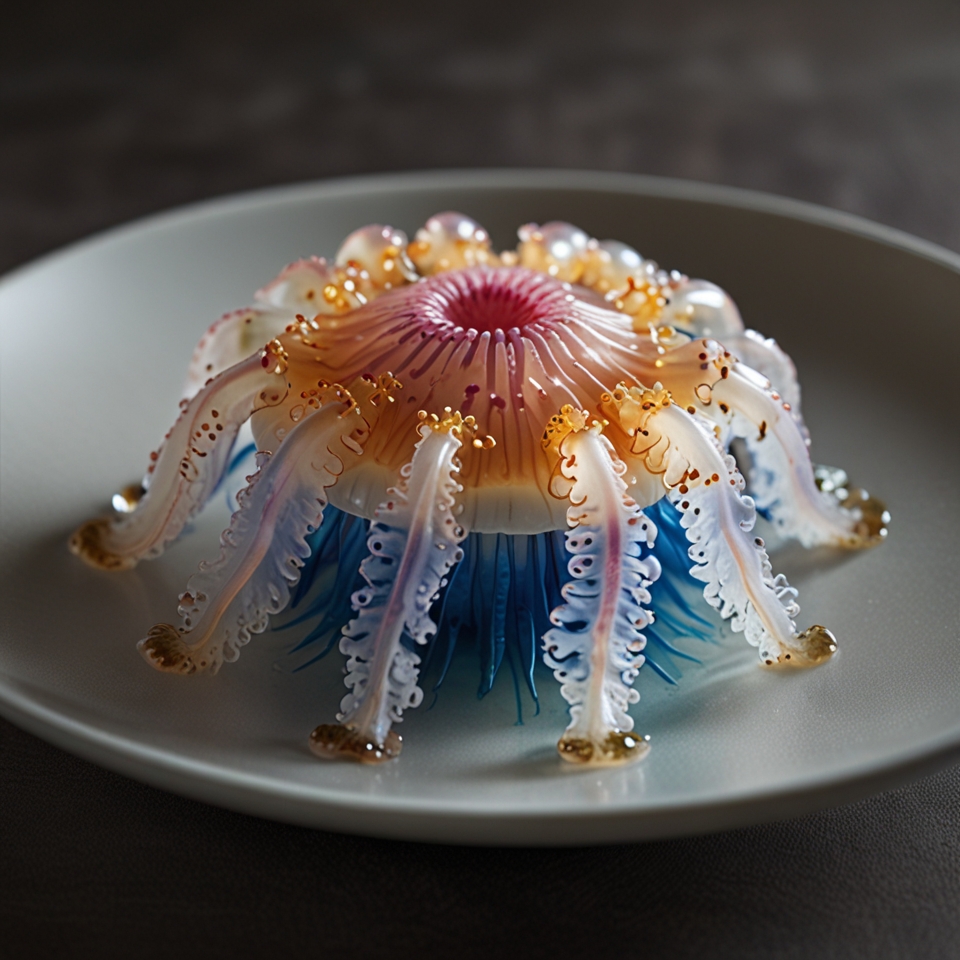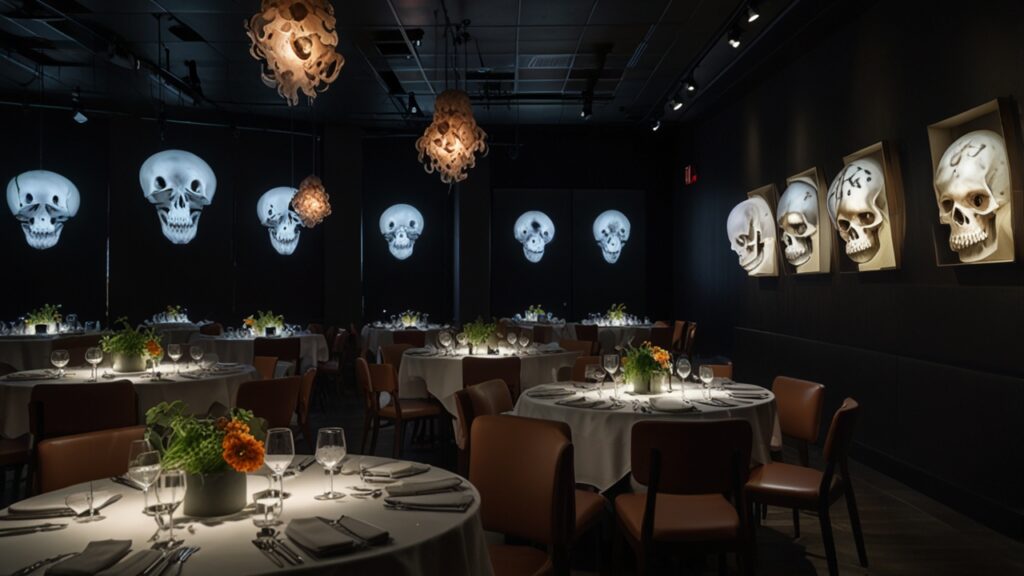Introduction
In today’s cutting-edge culinary world, a new type of restaurant experience is emerging: a fusion of fine dining and immersive theater. This isn’t just a meal—it’s a provocative art form that challenges diners to confront humanity’s destructive relationship with the planet. The lines between kitchen and stage blur, where culinary and dark performance art unite to push the limits of sensory and moral comfort.
Here, diners are served raw jellyfish and freeze-dried lamb brain inside a replica skull, all beneath a stunning ceiling display that depicts environmental devastation. The intent? To provoke a visceral reaction, forcing diners to question not only what we crave but also our macabre obsession with the taboo.
A Haunting Ambiance
The setting is designed to captivate and unsettle from the moment diners step through the door. Low lighting casts long shadows across the minimalist décor, while an eerie silence is broken only by the sounds of environmental destruction—the crackle of forests burning or the slow drip of melting icebergs. Above, the ceiling serves as a cinematic canvas, depicting soaring sea levels, barren landscapes, and species on the brink of extinction. This atmosphere thickens with anticipation and a quiet sense of dread, priming guests for the five-course meal that lies ahead.
The Unconventional Menu
The menu is an exploration of the uncanny, showcasing exotic ingredients in unconventional presentations meant to challenge diners’ understanding of food. The experience begins with raw jellyfish—an alien-like, translucent creature presented with surgical precision. Dressed in a delicate citrus marinade, the jellyfish’s rubbery texture provides a surprising contrast, prompting diners to question their culinary assumptions.

But the dish that truly tests the limits of expectation is the freeze-dried lamb brain. Served within a skull, this dish isn’t just meant to shock—it’s a commentary on the way we consume. The brain’s smooth, rich texture is subtly magnified by the freeze-drying process, blurring the line between delicacy and discomfort. Each bite forces diners to rethink the boundaries of what is considered acceptable in fine dining. Just because something is edible doesn’t mean it should be on a plate.
Dining Under a Dark Sky
As each course arrives, the atmosphere intensifies. Projections on the ceiling shift, revealing scenes of ecological collapse: coral bleaching, deforestation, and pollution. This immersive visual experience amplifies the dining journey, urging diners to reconcile the luxury of their meal with the stark reality of environmental destruction. Every bite becomes a metaphor for the fragile ecosystem we too often take for granted, even as we consume its resources.
Perverted Tastes or Provocative Art?
This culinary theater raises profound questions about human nature. Are we indulging in morbid curiosity, disconnected from the environment? Or is this experimental dining an art form designed to make us confront our unsustainable desires? The raw jellyfish, for instance, is more than just an exotic dish—it symbolizes shifting marine populations driven by overfishing and warming oceans. By turning jellyfish into a delicacy, the restaurant asks us to consider how environmental crises may reshape our food sources—and perhaps even hint at the food of the future.
A Mirror to Our Consumption
More than just an eccentric dining experience, this restaurant serves as a mirror, reflecting the ethical dilemmas surrounding our consumption. The raw jellyfish, the “brain in a cranium,” and the apocalyptic visuals all provoke self-reflection on how we eat and the consequences of our actions. Each dish acts as a metaphor for indulgence, a reminder of the excesses that have damaged our planet. This juxtaposition of eerie atmosphere and provocative menu engages both intellect and emotion, forcing guests to reconsider where they draw the line between necessity and luxury, art and exploitation.
Conclusion
Dining here is more than just an exploration of food—it’s a journey into the darker aspects of human desire and our complex relationship with the Earth. By confronting diners with unsettling dishes and disturbing imagery, the restaurant compels a deeper examination of our consumptive nature. As we stand at the edge of an environmental crisis, dining experiences like this urge us to reflect on our habits and reconsider not only what we consume but also why we do so.
If we continue to consume blindly, the consequences may be even darker than the most unnerving meal could ever suggest.



